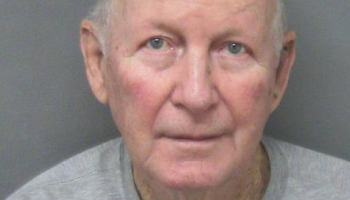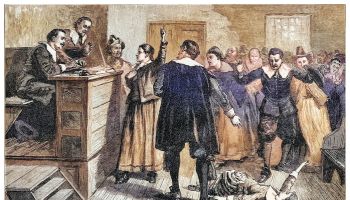CLEVELAND — The bodies could have been buried anywhere.
In the garbage bin next to his house, which occasionally reeked with the smell of something rotting inside. In the bowels of a boarded-up house down the block. Beneath a pile of debris in an overgrown, vacant lot.
Also read: Top 15 Black Bio-Pics Of All-Time
There are many places to hide a body in East Cleveland – a crime-ridden neighborhood where a man once lived among the corpses of 11 women for months and nobody noticed.
Ever since those bodies were found stashed throughout Anthony Sowell’s home, investigators have wondered: Did he bury more bodies nearby?
“I think it was on everyone’s mind,” says Richard Bell, one of the city’s chief prosecutors and director of Cuyahoga County’s cold-case unit. “We were not only finding bodies in his attic, but there were bodies out in the yard. The crew had to stay out there extensively, for days and days, wondering if they had dug deep enough.”
County Prosecutor Bill Mason said there was nothing to do but reopen the cases of the old, unsolved murders of women who resembled the victims found in Sowell’s house: poor, drug-addicted black women.
“Our approach to all of this was to find more Sowell victims,” Mason says. “Because we believed there were more.”
Mason’s cold-case team pulled the files of 75 unsolved homicides from within a three-mile radius of the two homes on the east side of town where Sowell – who has pleaded not guilty to killing the women – had lived since the 1980s. They dusted off old paperwork, pored over the reports and searched for any biological evidence that might still be tested for DNA.
Nicknamed the “Sowell surge,” the project was meant to assuage the fears of a city still shaken by the violent deaths of so many women.
“What we didn’t expect to find,” Bell says, “was another serial murderer.”
—
The evidence is buried in storage rooms all over the city, stuffed in boxes and bags and manila envelopes.
At police headquarters, the cluttered property rooms are overflowing with hundreds of drawers and shelves, each one stuffed with pieces of a crime: guns, metal cages, lawn rakes, egg crates, battered car seats, an old car muffler.
“This ain’t like CSI, where everything you need is in a pretty white box,” says Michael Beaman, one of the investigators.
The investigators rely on a stack of red leather-bound books dating back to 1911 that list each item and where it is stored. Evidence for a single case could be scattered among several storage facilities on opposite ends of town, from a suburban police precinct to walk-in freezers at the coroner’s office.
Retired homicide detectives in their 50s and 60s make up most of this cold-case team, along with a couple of scientists from the coroner’s office, a paralegal and a prosecutor. Paid with soon-to-end federal grant money, they’ve investigated old cases since 2006, focusing primarily on unsolved rapes and sexual assaults – the crimes that yield the greatest potential for DNA evidence. Until the Sowell Surge, they had filed 13 indictments in unsolved cases.
The team is scattered among several buildings but investigators mostly work in a cramped office in the depths of police headquarters, alongside current-duty investigators with active cases.
“When you look back at the number of unsolved homicides in Cuyahoga County, you know, there’s a lot on the shelf,” said Mike O’Malley, the chief investigator. “Now is an opportunity with the new technology to maybe solve some of those cases.”
Only female victims found nude or partially clothed were considered for the surge project. If there was no record of evidence that might contain DNA, the case was put back in the filing cabinet.
“From there, the investigators have to go out and find the stuff,” Bell says. “And that’s when we ran into some difficulty.”
Some of the evidence listed in police and autopsy reports for the surge cases had been lost or damaged over the years. Evidence from crimes committed before the advent of DNA technology in the 1980s was often not refrigerated, increasing the likelihood of damage, says Dr. Mohammad Tahir, executive director of the Cuyahoga County Regional Forensic Science Laboratory.
“Once biological material leaves the body, degradation starts,” Tahir says. “The higher the temperature, the faster the degradation.”
Once biological material reaches the coroner’s office, it can take a month or longer to produce a DNA profile, which is then submitted to CODIS, the FBI’s national database of DNA profiles from convicted offenders.
One day in November, a year after the bodies were found in Sowell’s home, O’Malley walked into Bell’s office and said there was a DNA hit in one of the surge cases: Mary Thomas, 27, who was strangled and beaten to death in 1989.
But the name on the lab report was not Anthony Sowell.
It was Joseph Harwell, who pleaded guilty to fatally strangling a woman near Columbus in 1997 and is currently serving 15 years to life at a prison in Mansfield, an hour south of Cleveland. Harwell, 50, has a long criminal history dating back to the 1970s, including a conviction for felonious assault in 1989, when he attempted to strangle another woman, who survived.
Harwell had already shown up once before on the cold-case radar. In 2008 – before any bodies were found in Sowell’s home – investigators had traced Harwell’s DNA to yet another woman killed near that East Cleveland neighborhood.
Tondilear Harge, 33, was found dead in September 1996 in a lot overgrown which shrubbery, blocks from where Harwell lived. The abandoned building where Thomas was killed seven years earlier was but 1.5 miles from Harwell’s home. Sowell’s home was nearby.
Prosecutors say Sowell, 51, lured vulnerable women to his home with the promise of alcohol or drugs. Police discovered the first two bodies and a freshly dug grave as they investigated a woman’s report that she had been raped there. For months, the stench of death wafted down the street where Sowell lived, but it was blamed on a sausage factory next door.
Investigators say there’s no evidence that Sowell and Harwell even knew each other. What they had in common was jail time for attacking a woman before they were accused of killing anyone. Investigators say they also shared a desire to rape and kill poor, drug-addicted black women.
—
“Can you give me the crime-scene pictures of this murder?”
The room is silent as photographs flash on the projector screen. It is Mary Thomas, lying face-down in the abandoned building, her body tangled in a pile of garbage, a red cord tied around her neck. She was three months’ pregnant when she died.
“This is the one where we’re having problems with the ligature,” Bell says. “The red ribbon.”
Next up on the screen are photographs of Harge, face up, half-naked, in a wooded lot near a demolished garage. Her death was ruled a homicide “type undetermined,” and she remained nameless, unidentified for a month after she was killed.
It is mid-January, and the DNA hit has spurred the cold-case team to re-investigate the murders of these two women. Though their deaths were nearly a decade apart, Thomas and Harge lived and died in similar fashion – roaming the streets of East Cleveland, high on crack, looking for their next hit. They are among the pool of drug addicts who have been turning up dead in this neighborhood since the crack epidemic swept through here in the 1980s.
“Crack destroyed a lot of places,” Beaman says, “and East Cleveland was one of them.”
There is a sense of anger in the black community that the Sowell victims were neglected by police – that their disappearances were not taken seriously – simply because most of them were hooked on drugs. In recent months, the victims’ families have filed a flurry of wrongful death lawsuits accusing the city’s law enforcement agencies of what amounts to a complete systemic failure.
O’Malley won’t get into any of that controversy.
“We have to concentrate on what we do,” he says. “All we can do is come back and say, 20 years later, we solved this case.”
Re-tracing old steps, the cold-case investigators knocked on doors in East Cleveland, tracking down family members who’d moved often over the years. They encountered such obstacles as the disappearance of the red cord used to strangle Thomas. It has vanished from a police storage facility and cannot be found.
Witnesses have vanished, too. And the ones still around are sometimes unreliable because they are addicted to drugs themselves.
“It’s not just a matter of getting a (DNA) hit,” O’Malley says. “You’ve got to kind of separate the wheat from the chaff – what’s true and what’s not.”
As of early March, 46 of the original surge cases remain active. Most of them await further testing at the coroner’s office. So far, Thomas is the only victim to produce a DNA hit.
On Tuesday, more than a year after the Sowell surge began, the prosecutor’s office charged Harwell with six counts of aggravated murder, two counts of rape and six counts of kidnapping in the deaths of Thomas and Harge. The multiple counts for each death came with different legal specifications.
Harwell does not yet have a lawyer.
—
Mary Ann Prater has not heard the name of her deceased daughter, Mary Thomas, spoken aloud in a long time. She has boxed away the old photographs and memories, trying to move on. Sometimes it feels like Thomas died only yesterday.
The worst day of Prater’s life was March 28, 1989, when she got home from her job as a hospital nurse and turned on the evening news to hear of a young woman killed a few blocks away. It dawned on her, as the broadcaster described the dead woman’s clothing, that her daughter had worn that very outfit hours earlier, as she smiled, braiding a friend’s hair into cornrows, and waved goodbye to her mother.
Prater asked a friend that night to drive her to the morgue.
“I was hoping it wouldn’t be her, but you know, I just had a feeling it was,” she says.
Looking at the body, she allowed herself to think at first that this could not be her daughter – that there was still hope – not this girl with the darkened, ash-colored skin and that red cord wrapped around her neck.
For a long time afterward, Prater feared the killer would come after her. She moved back to St. Louis, her hometown, and stayed there for 10 years.
“I was so paranoid,” she says. “I didn’t want nobody coming to my house.”
When bodies were being carried out of Sowell’s house, Prater called East Cleveland police and asked if they thought her daughter’s death might be connected to Sowell. They said no. But she held out hope that police might find the person who did it.
So did Yolanda Cooke-Gillis, Harge’s sister-in-law, who helped raise Harge’s children after she died.
“She was just fun and outgoing and so warm,” Cooke-Gillis says. “And funny. And she always made you laugh.”
All these years later, she still visits the cemetery on Harge’s birthday to light candles and say a prayer.
“But that’s not gonna bring her back,” she says, wiping tears from her eyes. “That’s not gonna bring her back.”
Two weeks ago, the youngest of the four children that Thomas left behind was killed in a shooting at the night club where he worked. Prater says he was an innocent bystander, in the wrong place at the wrong time. His death reopened old wounds that the family still hasn’t healed from.
“I was telling my daughter today, history repeats itself,” Prater says. “And when do it stop? When do it stop?”
RELATED:
TOP 9 MUSIC VIDEOS OF THE 2000’S
















